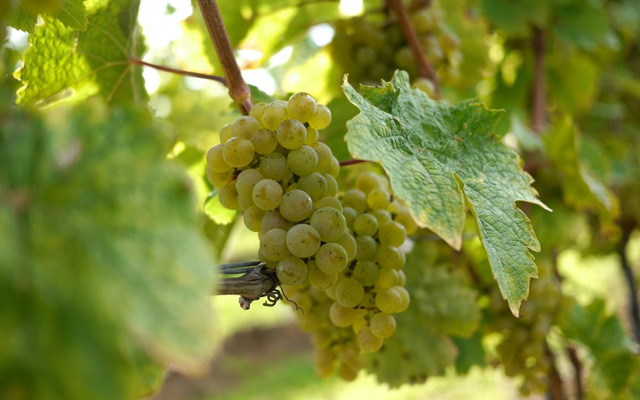
The world of wine may seem daunting to somebody new to the subject. With the countless available bottles of wines, which should beginners buy first?
If you haven’t tried any type of wine before, you may need to start with the lighter wines to learn how to appreciate the different flavours in the wines before moving forward.
Luckily, you can purchase wines at shops like Usual Wines that can be considered great break-in wines which can initiate your appreciation for this wonderful beverage.
Below are the best types of wines you should try as a beginner:
1. Chardonnay
It’s a white wine grape variety that offers a unique taste. Oftentimes, chardonnay is not sweet and dry, but can be fruity. It also has no tannin as it’s white. When it comes to its acidity level, it depends on where it’s from. Usually, chardonnay wines made in European countries have a high acidity level compared to their US counterparts.
2. Cabernet Sauvignon
This type of red wine is ideal for those who prefer a fuller, richer wine. Cabernet sauvignon has high acidity and tannins, but it also has fruity flavors ranging from plums to berries. It also features flavors such as baking spice, coconut, vanilla, and chocolate, depending on the place of origin.
While other people may find cabernet sauvignon a little intense for their taste, some people love it. So, at the end of the day, it depends on your preferences.
3. Pinot Noir
It’s a famous red variety that comes with soft tannins. Basically, tannins are a group of astringent and bitter compounds that exist in vegetation, including in the stems, seeds, and skin of grapes.
While white wines use the grape juice only, whole grapes can be used in producing red wines. That’s why red wines are tannic.
Without nerding out on the tannins and their place in wine flavour and winemaking, understand that too many tannins can cause poor mouthfeel and may lead to a dry, bitter taste that’s not pleasant once it’s not balanced with fruity flavours. In terms of food and wine pairings. pinot noir pairs well with red meat and some rich, textured food like cheese.
4. Prosecco
It’s a sparkling wine from Italy that’s made from grapes known as glera. Prosecco is referred to as a sparkling wine because it’s a white wine. Once you taste it, you’ll find that it’s slightly sweet and fruity with flavours that could remind you of lemons and green apples.
Prosecco has relatively low acidity and no tannins, making it easy to appreciate for those who are just getting started with drinking wine.
5. Pinot Grigio
This is another white wine with a subtle, clean flavour. Pinot grigio is an excellent wine for beginners searching for something approachable and soft. Although it isn’t a sweet wine, it has a fruity, mild flavour and is suitable for drinking with seafood or even without food.
6. Riesling Wines
These wines may range from dry to sweet and are known for their mineral and crisp citrus flavours. Riesling wines are light-bodied and have bright acidity. They’re also complex and rich and described as syrupy, honeyed, and nutty with apricot, citrus, and peach notes.
Riesling wines pair well with a salty cheese like feta, aged gouda, and blue cheese. They’re also best with sweet desserts and spicy appetizers.

7. Sauvignon Blanc
Sauvignon Blanc is a dry and light white wine, which is characterized as refreshing and crisp with less sweetness compared with semi-dry white wines. Typically, it features simple flavours, including kiwi, citrus fruits, tart, and honeydew melon. It’s also served chilled and pairs perfectly with lightly flavoured food.
The best time to enjoy sauvignon blanc is during the summer months and should be consumed when they’re young. Another good thing about this wine is that it’s something that all beginners can afford.
8. Zinfandel
Unlike merlot and cabernet sauvignon, zinfandel has a lighter color. It’s a light-bodied wine with moderate tannins, high acidity, and high alcohol level, which give it a bold taste.
Zinfandel also has flavours of jam, cherry, black pepper, cranberry, licorice, plum, and blueberry. It usually has a candied fruity taste that ends with a smoky finish. Zinfandel wines also pair well with pasta, spicy cheese, pizza, poultry, pork, lamb, and beef dishes.
9. Rosé
Rosé wines are misunderstood wines that typically bring to mind a sweet concoction that lingers on the tongue and in the mouth. However, the truth is that this wine may range from dry to semi-sweet. Rosé can be still or sparkling and has flavours of red fruits, citrus, melon, and flowers. The finish can be the same as celery or rhubarb.
You can find the finest rosé wines in Provence, but they can also be produced from various types of grapes grown in different vineyards worldwide. Typically, rosé wines are made with red grapes, and the skin is removed after pressing, which leaves the color behind.
10. Merlot
Its origin is in Bordeaux, France. But, today, merlot is grown worldwide. In comparison to some wines, merlot wines taste fruity and fresh, ending with notes of mocha, vanilla, and cloves. It’s also a full-bodied, dry wine which pairs well with beef, fish, and chicken dishes.
11. Malbec
It’s known for its smoky finish and juicy, rich fruit flavours. When compared with other wines, malbec is a full-bodied red wine with great flavours. It tastes well with or without food, but it’s a perfect choice for dinner as it pairs nicely with red meat like steaks and lamb chops, creamy mushroom sauces, and sharp cheese.
Malbec got its start in France before it became known in Argentina which yields two Malbec variations with distinct differences. Argentinian varieties are bolder, fruit-forward, and plumy, while French malbec is tart with firmer tannins and savor. Both variations are rich and dry yet unpretentious and easy to drink.
Wrapping Up

There are other types of wines you can enjoy as you start your wine journey. Whether you decide to try the above suggestions or venture out on your own, consider tasting various bottles of red and white wines to get a feel for them. If you’re confused with the options available, you can always ask a wine shop owner to recommend wines for new palates.

Comments are closed.